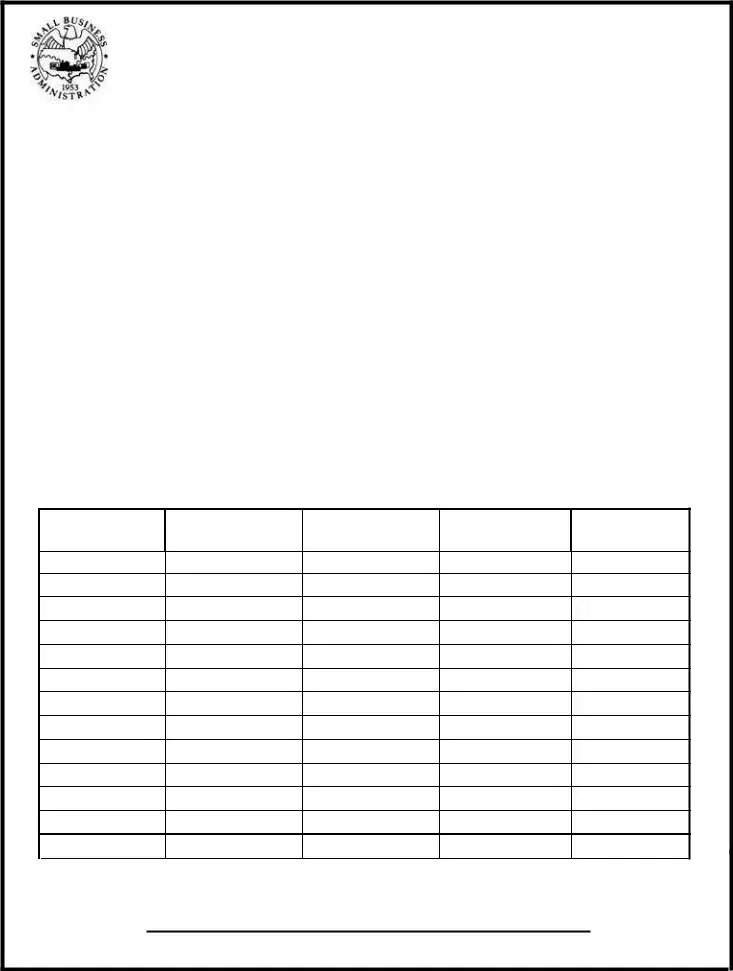
OMB No. 3245-0017
Expiration Date: 08/31/2021
U. S. Small Business Administration
ADDITIONAL FILING REQUIREMENTS
ECONOMIC INJURY DISASTER LOAN (EIDL), and
MILITARY RESERVIST ECONOMIC INJURY DISASTER LOAN (MREIDL)
*An EIDL is limited to providing working capital that is unavailable from other sources, as determined by the U.S. Small Business Administration (SBA), for an eligible business to continue operations until the effects of the declared disaster have passed.
*A MREIDL is limited to providing working capital that is unavailable from other sources, as determined by the SBA, for an eligible business to continue operations until the effects of a call-up to active duty (as a result of a military conflict) of an essential employee have passed.
*The APPLICANT must be a small business or small agricultural cooperative, as defined in SBA's published size standards, or an eligible private non-profit organization of any size.
*The APPLICANT must establish that the claimed economic injury is substantial and is a direct result of the declared disaster. For MREIDL, the applicant must establish the claimed economic injury is substantial and is a direct result of the call-up of an essential employee. Substantial economic injury generally means a decrease in income from operations or working capital with the result that the business is unable to meet its obligations and pay ordinary and necessary operating expenses in the normal course of business.
*The 1368 is required for an economic injury loan increase requests when supporting documentation is not available.
PROVIDE THE FOLLOWING INFORMATION IN ADDITION TO THE REQUIREMENTS ON THE
“DISASTER BUSINESS LOAN APPLICATION,” SBA FORM 5
Monthly Sales Figures
Provide monthly sales figures (you may estimate if actual figures are not available) beginning 3 years prior to the disaster and continuing through the most recent month available.
PLEASE NOTE: Identify any estimates with a small letter “e” after the number.
*Totals
*Please note: the total figures for each year should reconcile to the sales figures on your tax returns for the corresponding fiscal year.
PLEASE SUBMIT ANY ADDITIONAL NARRATIVE OR FINANCIAL
INFORMATION YOU FEEL WILL HELP ESTABLISH YOUR ECONOMIC LOSS
CONTINUED ON REVERSE
SBA Form 1368 (05-18) Reference SOP 50-30 Previous editions are obsolete. |
Page 1 |
|

It can be helpful to provide a financial forecast to illustrate what the income and expenses for the business will be during the period affected by the disaster until normal operations resume. This is not required.
This optional format is provided for your convenience.
Period covered by this forecast. From |
To |
Net sales (receipts) |
|
|
|
Less cost of goods sold |
|
|
|
Gross profit |
|
|
|
Less expenses |
|
Officers salaries |
|
|
|
Employee wages |
|
|
|
Advertising |
|
Rent |
|
Utilities |
|
Interest |
|
Taxes |
|
Insurance |
|
Other expenses |
|
Total expenses |
|
Net profit <Loss> before income taxes |
|
PLEASE SUBMIT ANY ADDITIONAL NARRATIVE OR FINANCIAL INFORMATION
YOU FEEL WILL HELP ESTABLISH YOUR ECONOMIC LOSS
Please note: The estimated burden for completing this form is 1 hour. You are not required to respond to any collection of information unless it displays a current valid OMB approval number. Comments on the burden should be sent to U.S. Small Business Administration; Chief, AIB; 409 3rd St., SW, Washington, DC 20416 and Desk Officer for the Small Business Administration; Office of Management and Budget, New Executive Office Building, Room 10202, Washington, DC 20503. OMB Approval (3245-0017). Please do not send forms to OMB.
SBA Form 1368 (05-18) Reference SOP 50-30 Previous editions are obsolete. |
Page 2 |


